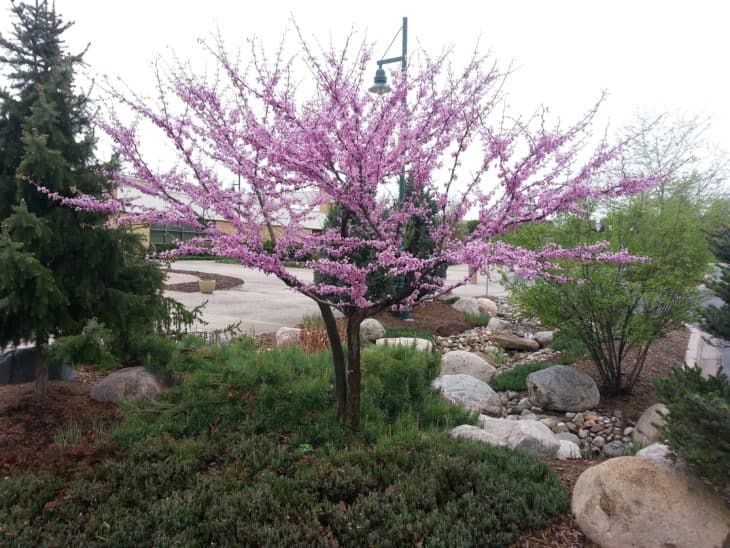
Redbud trees are a popular and attractive ornamental tree choice for many homeowners. They are known for their showy pink and purple flowers, glossy green foliage, and lovely seed pods. Redbuds are also relatively easy to care for and are often used as a focal point in a garden or landscape. But before you decide to plant a Redbud tree, it’s important to consider the pros and cons.
Pros of Redbud Trees
The most obvious and appealing feature of Redbud trees is their beautiful, showy pink and purple flowers that bloom in early spring and last until late summer. The flowers look great against the glossy green foliage and add a splash of color to your yard.
Redbud trees are relatively easy to care for and are not prone to many pests or diseases. They also don’t require much pruning or maintenance and can thrive in a variety of soil types.
Redbud trees are also fast-growing and can reach up to 25 feet in height and width. They are also drought-tolerant and can withstand temperatures as low as -20 degrees Fahrenheit.
Redbud trees are a great choice for anyone looking for a low-maintenance ornamental tree. They are easy to care for and look great in any landscape or garden.
Cons Of Redbud Trees
Redbud trees are prone to some diseases, such as powdery mildew and canker. It’s important to keep an eye out for signs of disease and take steps to prevent them, such as proper pruning and good air circulation.
Redbud trees are also prone to some pests, such as spider mites and aphids. Again, it’s important to keep an eye out for signs of pests and take steps to prevent them.
Redbud trees are fast-growing, but they are also short-lived, with a lifespan of only 10-15 years. This means that you may need to replace your Redbud tree more often than other types of trees.
Redbud trees are not tolerant of wet soils, so they are not the best choice for areas that are prone to flooding or heavy rains. They also require full sun, so they may not be the best choice for shady areas.
Tips and Ideas
Make sure to plant your Redbud tree in an area that has well-draining soil and full sun. This will help prevent diseases and pests and ensure that your tree has the best chance of thriving.
If you’re looking for a low-maintenance tree, consider planting a Redbud. They are easy to care for and require minimal pruning and maintenance.
If you live in an area that is prone to flooding or heavy rains, you may want to consider planting a different type of tree. Redbud trees are not tolerant of wet soils and may not survive in such conditions.
Redbud trees can be a great addition to any landscape or garden. Consider planting a few around your property to create a beautiful focal point and add some color to your yard.
Redbud trees can be a great addition to any landscape or garden, but before you decide to plant one, it’s important to consider the pros and cons. They are known for their showy pink and purple flowers, glossy green foliage, and lovely seed pods, but they also require full sun and are not tolerant of wet soils. They are also prone to some pests and diseases, and are relatively short-lived. But if you’re looking for a low-maintenance ornamental tree, Redbud trees can be a great choice.
Images Related to Pros And Cons Of Redbud Trees:
Pros And Cons Of Redbud trees — MyProsAndCons

5 Pros And 4 Cons Of Redbud Trees - ProGardenTips

13 Pros and Cons of Redbud Trees Rarely Talked About (Eastern Redbud Secret)
